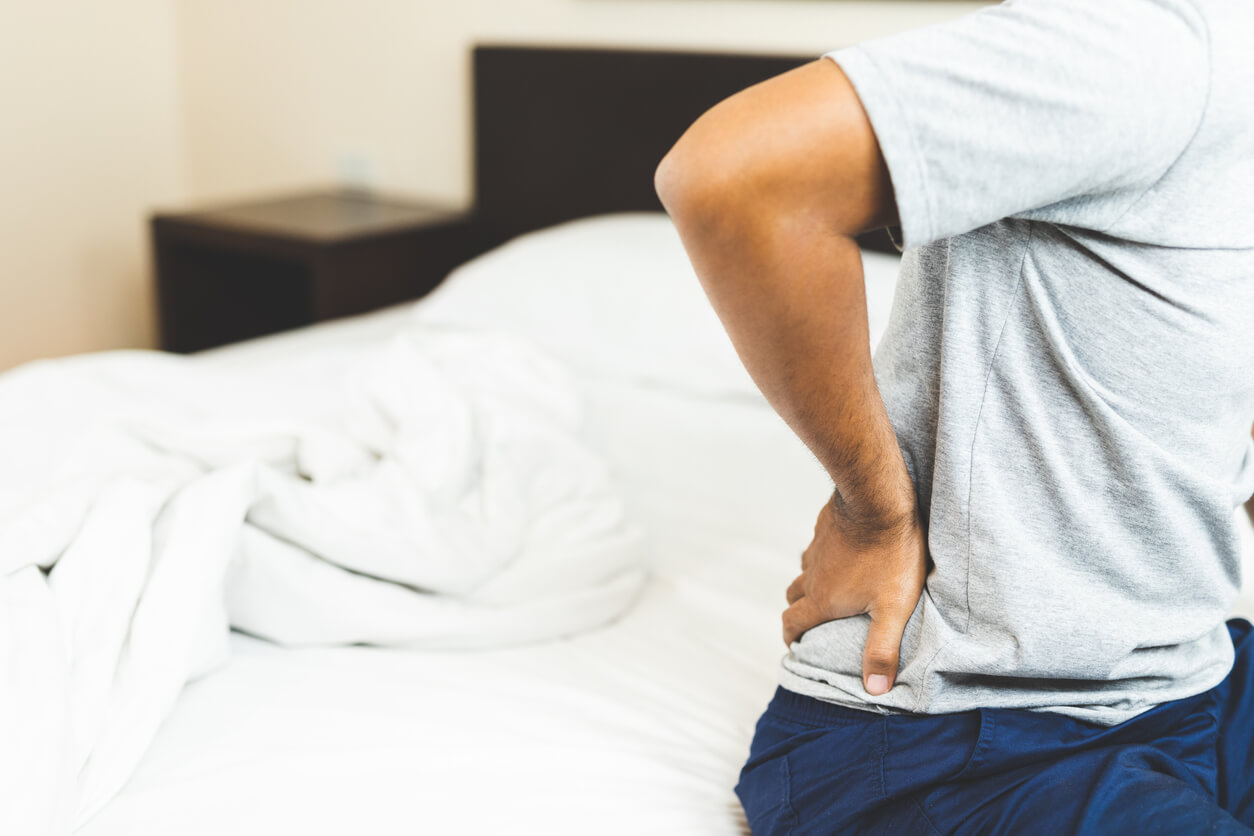Arthritis Pain Relief: 20 Natural and Medical Remedies
Arthritis pain management: The best treatment options for joint pain relief
Arthritis is a leading cause of disability in the United States, affecting over 53.2 million Americans. Arthritis symptoms can be uncomfortable, causing joint pain, inflammation and limited mobility.
This article will help you better understand the types of arthritis and their common symptoms. It will also cover 20 effective ways to manage them and find relief. From medications and lifestyle changes to physical therapy and emotional support, these strategies can improve your quality of life and overall well-being.
Understanding your condition: What is arthritis?
Arthritis is a term used to describe medical conditions that cause inflammation of one or more joints. Joints are the places in your body where two or more bones meet. There are over 100 different types of arthritis. Arthritis can be acute, with symptoms that come on suddenly and severely, or chronic, with symptoms that appear and persist over time.
Common arthritis symptoms can include:
- Joint pain
- Joint stiffness
- Reduced range of motion
- Joint deformities
Symptoms may vary slightly depending on the type of arthritis. Typically, arthritis is associated with chronic pain in the joints.
Common types of arthritis
Two of the most common types of arthritis are osteoarthritis (OA) and rheumatoid arthritis (RA). The main difference between the two conditions is their cause. OA is caused by joint injury or overuse. RA, on the other hand, is an autoimmune disease where the body’s immune system attacks the joints, causing inflammation.
Osteoarthritis vs. rheumatoid arthritis:
- Osteoarthritis (OA): Osteoarthritis is the most common type of arthritis in the United States and the rest of the world. It is also known as degenerative joint disease. The natural wear and tear of the joints typically causes OA. It often affects the joints and surrounding cartilage in the hands, knees, hips, lower back and neck. OA is most commonly diagnosed in people over the age of 50.
- Rheumatoid arthritis (RA): Rheumatoid arthritis is a chronic autoimmune disease that causes the body’s immune system to attack itself inappropriately. That attack results in inflammation, typically in several joints at once. RA can cause long-lasting damage to the joint tissue, which can lead to chronic, severe pain and deformities of the affected joints. Additionally, RA can also affect other important organs like the heart and lungs.
OA and RA can have overlapping symptoms like joint pain and loss of mobility or function. However, treatment plans for both conditions may differ.
20 Natural and medical remedies for arthritis joint pain relief
Dealing with arthritis and its symptoms can be challenging. However, these 20 natural and medical remedies can help you manage joint pain, reduce inflammation and improve your quality of life:
Medications
1. Use over-the-counter oral medications
Over-the-counter (OTC) nonsteroidal anti-inflammatory drugs, or NSAIDs, can help reduce inflammation of the affected joints and provide pain relief. Common NSAIDs used to soothe arthritis symptoms include ibuprofen (Advil, Motrin IB) and naproxen (Aleve).
Additionally, OTC pain-relieving medications like acetaminophen (Tylenol) can be used to treat arthritis-related pain. However, while acetaminophen may help with pain relief, it will not help reduce inflammation.
2. Apply over-the-counter topical pain relief creams and gels
Over-the-counter (OTC) topical creams and gels can help provide short-term pain relief for swollen and painful joints. OTC gels and creams for arthritis usually contain one of these ingredients: capsaicin (Capzasin), salicylates (Asprin, Aspercreme) or counterirritants (menthol, eucalyptus oil, camphor). OTC nonsteroidal anti-inflammatory drugs, like Diclofenac (Voltaren), are also available in gel form.
Apply the creams over the skin of the affected joints according to the instructions on the product label. If irritation occurs, rinse the affected area, discontinue use and contact your healthcare provider.
3. Try cannabidiol (CBD) supplements
Cannabidiol (CBD) is a cannabinoid that may be used to help reduce inflammation and arthritis-related pain. Unlike delta-9-tetrahydrocannabinol (THC), CBD does not have psychoactive side effects. Arthritis patients who used CBD reported improvements in mobility. They also reported improved sleep and less pain.
CBD comes in many forms. These include CBD-infused tinctures, oils, gummies, capsules, and creams. You do not need a prescription to purchase CBD-infused products.
4. Consider prescription-strength oral medications
If OTC nonsteroidal anti-inflammatory drugs (NSAIDs) don't ease your joint pain, your doctor may prescribe oral pain meds to help. These medications may include strong NSAIDs or corticosteroids. Corticosteroids are another type of anti-inflammatory drug.
Additional oral medications a doctor may prescribe to help ease arthritis symptoms can include:
- Celecoxib (Celebrex)
- Nabumetone (Relafen)
- Indomethacin (Tivorbex)
- Meloxicam (Mobic)
In some severe cases, doctors may prescribe opioid pain relievers, like tramadol (Ultram), if needed. The use of these medications is highly regulated. The long-term use, overuse or misuse of acetaminophen, NSAIDs and opioids can be harmful and even life-threatening. Talk to your doctor about these medications' side effects and associated risks.
5. Talk to your doctor about prescription hyaluronan injections
If you have knee osteoarthritis (KOA), your doctor may prescribe hyaluronan injections to help ease pain. Hyaluronan injections are safe, effective and convenient.
Hyaluronan, or hyaluronic acid, is naturally found in different tissues, synovial fluids (the thick fluid that lubricates the end of bones and joints) and cartilage. People with KOA and older adults can experience a loss of synovial fluid. Synovial fluid is a thick liquid that coats your joints to help reduce friction. Hyaluronan injections can help boost and replenish the loss of synovial fluid and provide pain relief in the knee area.
Lifestyle changes
6. Follow a balanced and healthy diet
You may be familiar with the famous Hippocrates quote, “Let food be thy medicine and medicine be thy food.” Even though that phrase dates back to around 400 BC, it’s still relevant today.
A healthy, balanced anti-inflammatory diet, like the Mediterranean diet, may help support your arthritis treatment by reducing inflammation in the body.
The Mediterranean diet focuses on reducing processed foods and simple carbohydrates. Instead, it encourages people to choose whole grains. These include healthy fats, antioxidant-rich vegetables, and other nutrient-dense ingredients.
In addition to the Mediterranean diet, other healthy balanced diets are also good for arthritis. They are rich in fruits, vegetables, whole grains, and lean proteins. They help relieve arthritis symptoms and support joint health. Additionally, adding vitamin D, curcumin (found in turmeric), fish oil and probiotics to your diet could help support your arthritis treatment.
7. Try to manage your weight
Healthy weight management can help you keep your arthritis symptoms in check and under control. Being overweight can be hard on your joints. Every pound of body weight adds four to six pounds of pressure on each knee joint. Staying at a healthy weight can help reduce the amount of extra weight and pressure on your joints.
Obesity is also linked to the development and advancement of arthritis. It affects weight-bearing joints, like your knees, and non-weight-bearing ones, like your hands. Losing weight can significantly help lower arthritis pain and slow joint damage in patients with arthritis.
8. Engage in physical activity and movement
Regular exercise can improve physical abilities and fitness. It can also help reduce discomfort and the likelihood of falling in adults with arthritis. Only 36.2% of adults with arthritis meet the World Health Organization's aerobic physical activity guidelines.
Being physically active and fit can help strengthen the muscles around your joints and reduce bone loss. Additionally, daily exercise can be a great way to manage your weight and improve your mental well-being.
The idea of adding exercise to your daily routine can feel daunting. But, you don't have to commit to a hard or rigorous workout to get started. You can ease into a daily movement routine with cozy cardio or a daily 30-minute walk.
9. Quit smoking
Smoking is one of the most important external risk factors for the development and severity of arthritis. Arthritis patients who smoke can be at a higher risk of inflammation and oxidative stress (linked to tissue damage). Additionally, smoking can affect how well an arthritis patient may respond to medical treatment, especially in rheumatoid arthritis (RA) patients.
10. Reduce your alcohol consumption
Prolonged and excessive alcohol consumption can lead to oxidative stress, which causes tissue damage. Additionally, alcohol may cause inflammation in the liver, heart and pancreas. Alcohol can also raise uric acid levels in the body. This can cause more inflammation in arthritis patients, especially those with gout.
Embracing the sober curious movement, which emphasizes mindful alcohol consumption, can be a supportive starting point for those with arthritis looking to reduce their alcohol intake and manage their symptoms more effectively.
Physical therapy
11. Maintain good posture
For arthritis patients who already struggle with pain, focusing on posture correction can provide significant relief and help manage their symptoms more effectively, ultimately enhancing their overall quality of life.
Poor posture is linked to pain in the muscles and joints. In some cases, people with arthritis can experience difficulties in controlling their posture. The swelling caused by arthritis can result in pain and impair a person's ability to maintain balance, which may increase the likelihood of falling.
Posture correction can help relieve musculoskeletal pain and decrease the risk of falls in arthritis patients.
12. Apply hot or cold compresses
Hot or cold packs can be used to temporarily relieve some of the pain associated with arthritis. Applying a heating pad or an ice pack for 20 minutes every other day can positively help alleviate symptoms, improve physical function and support existing treatment. Additionally, cold therapy can help reduce swelling and inflammation in the affected joints.
13. Try massage therapy
Massage therapy is a beneficial method for alleviating arthritis-related pain in various areas of the body, including the joints, lower back, and neck. Certain massage techniques, like Swedish massages and deep tissue massages, can help promote better circulation and may be beneficial in reducing arthritis-related pain.
Regular massage therapy sessions from a licensed physical therapist or qualified professional can help. This therapy can effectively reduce stiffness and improve physical function and mobility.
14. Try acupuncture
Specialists have used acupuncture to complement existing treatments for various types of arthritis. Acupuncture is well-known for its pain-numbing and pain-reducing effects. It has treated thumb joint arthritis in osteoarthritis patients.
Additionally, it can be appealing to patients who wish to avoid the negative side effects that may be associated with the long-term use of certain arthritis medications.
15. Consider assistive devices or orthotics
Canes and other devices can help people with moderate to severe arthritis. They make day-to-day life easier and more independent. Arthritis patients who are overweight may benefit more from the support of a cane to ease joint pressure rather than orthotic inserts.
Orthotics are devices used to help support the limbs and spine. Common orthotics are shoe inserts, splints and braces. Your medical provider can help you determine which orthotic may be most helpful for you, based on your unique situation and type of arthritis.
Emotional well-being
16. Prioritize quality sleep
According to the Arthritis Foundation, approximately 80% of people with arthritis have trouble sleeping. This may be because chronic pain and sleep are closely related. Pain can make it difficult to fall and stay asleep and sleep deficiency may worsen chronic pain.
Good sleep hygiene, which is when you have a healthy bedtime ritual and prioritize getting enough hours of interrupted sleep every night can help improve your sleep quality. Try to avoid screens before bedtime, keep a regular sleep schedule and eat your last meal around two hours before going to bed. Additionally, orthopedic pillows, mattresses and mattress toppers may help support your joints as you sleep.
17. Consider cognitive behavioral therapy
Arthritis can impact more than just your body and joints. It can also take a toll on your mental health and emotional well-being.
Cognitive Behavioral Therapy (CBT) is one of the most effective types of psychotherapy (talk therapy) for reducing anxiety and coping with stressful thoughts. CBT works by helping you reframe your negative thoughts and replace them with more accurate and balanced ones.
CBT can provide valuable emotional support for patients with arthritis. Additionally, it can be an effective addition to existing treatment and a crucial part of a holistic approach to managing the condition.
18. Join a support group
Joining a support group can help you feel empowered. You will feel seen and connected to others who understand your situation. Support groups are valuable communities. They offer a safe place to share experiences, trade tips, and give encouragement.
Support groups can be especially helpful for people with chronic or acute medical conditions, like arthritis. The groups help with coping with their specific situations. Support groups can also help people build community and feel less alone and better prepared to navigate through any challenges related to their condition.
19. Honor your self-care time
Making time for self-care is essential for feeling in touch with yourself and your body. By dedicating time to activities that make you feel good and happy, you can cultivate a deeper sense of well-being and self-awareness.
This practice can allow you to focus on your physical and emotional needs and reduce stress. Engaging in self-care routines, such as light exercise, meditation, gardening or your hobbies, can improve your overall mood and make your daily life more enjoyable and fulfilling.
20. Manage your health as you age
Even though anyone can get arthritis, it is most commonly diagnosed in people over the age of 50. This is why managing your health as you age is so important.
By making sure you see your doctor every year, eating well, and staying active, can significantly reduce the risk of other age-related health conditions. Being proactive and on top of your health can also help make any existing conditions, like arthritis, more manageable, which can improve your overall quality of life.
Regular check-ups allow for early detection and treatment of potential health issues. Additionally, regular exercise, a balanced diet and a healthy lifestyle can support joint health, reduce inflammation and improve your overall health and well-being.
How Sesame can help
If you are looking for help managing your arthritis symptoms, Sesame can connect you to thousands of top-rated, licensed medical healthcare providers who can help. Book an online orthopedic visit today to receive high-quality and convenient care from the comfort of your home.
Providers on Sesame can help provide personalized care to help manage your arthritis symptoms effectively. Through Sesame, you can easily access expert advice, receive accurate diagnoses, and explore various treatment options tailored to your needs.
Related posts

Learn about early arthritis symptoms and possible treatments to manage the chronic condition and improve your quality of life.

Acute and chronic back pain can affect patients’ quality of life, mobility, and long-term health. In this blog article, we’ll dive deep into the primary causes of lower back pain, the symptoms it causes, and the standard treatment options available.

Nonsteroidal anti-inflammatory drugs (NSAIDs) treat inflammation and pain symptoms caused by various medical conditions. NSAIDs are also known as pain relievers or painkillers.

Learn the key differences between tension headaches and migraines, including symptoms, triggers, and treatments. Find out how to prevent headaches naturally, when to seek care, and how Sesame’s online providers can help you manage pain.

Struggling with back pain during pregnancy? Get tips from a doctor on how to relieve back pain.

In this blog article, we will detail some of the most common causes of lower right back pain and how to treat the root of the problem.

Hot flashes can be overwhelming, disruptive and unpredictable. This article explores what hot flashes are, along with their common symptoms. It also offers the best natural and medical remedies to help mitigate them.

Cortisone injections are used to treat several health conditions. Learn more about the factors that affect the cost of an injection, side effects, and more.

To help better understand breast cancer—how prevalent it is, how it’s diagnosed and treated, and how to prevent it—we put together this guide.
